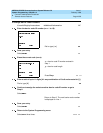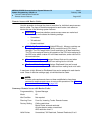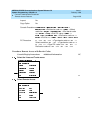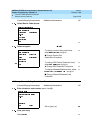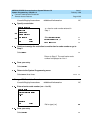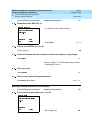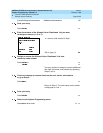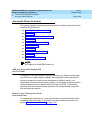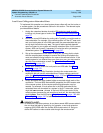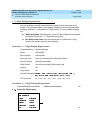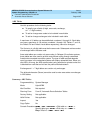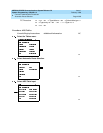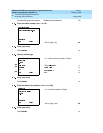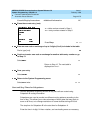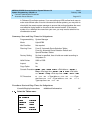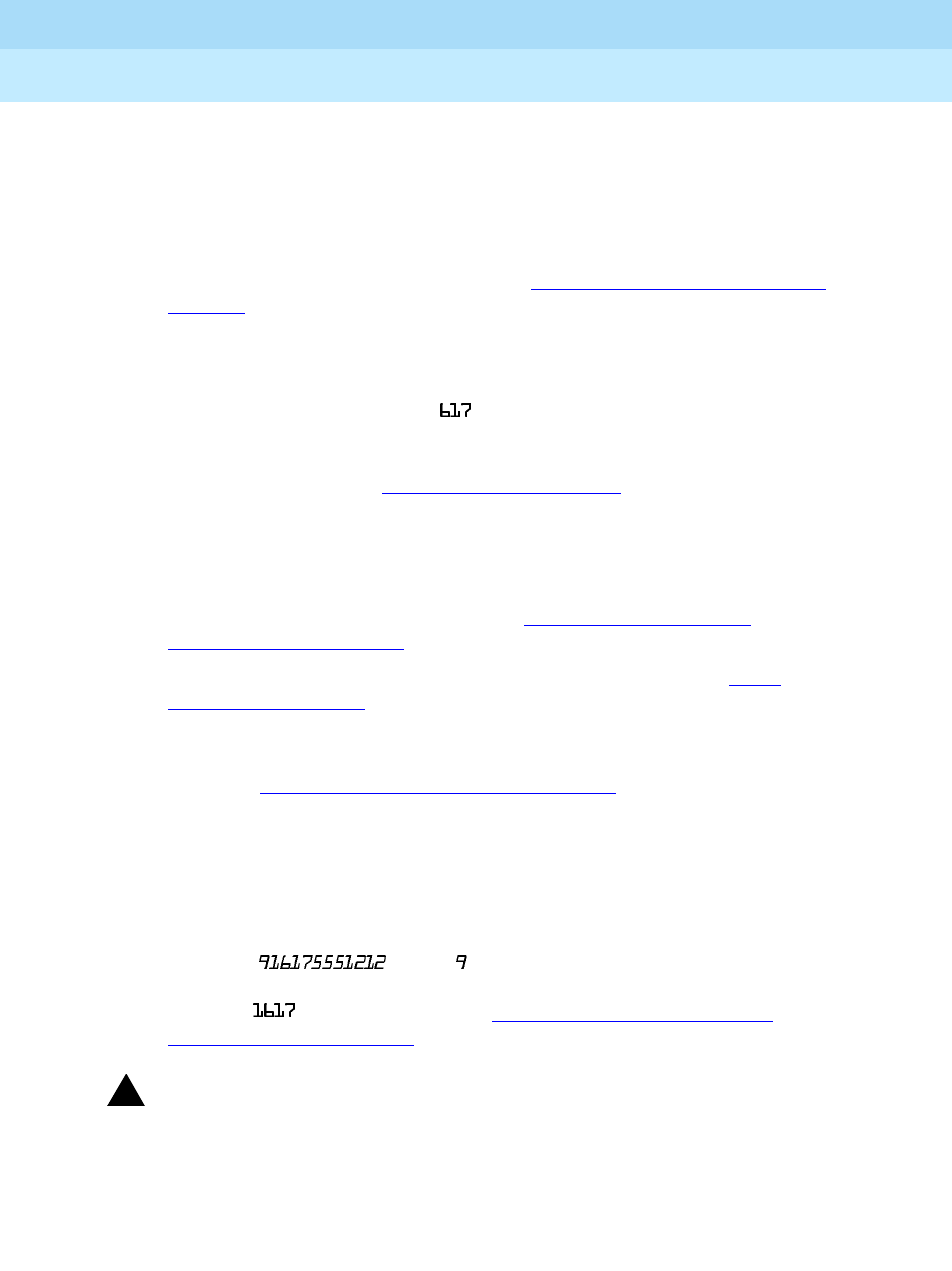
MERLIN LEGEND Communications System Release 6.0
System Programming
555-660-111
Issue 1
February 1998
Common Administrative Procedures
Page 4-364Automatic Route Selection
4
Local Users Calling out on Networked Lines 4
To implement this operation on a local system where callers will use the trunks on
a
remote
system, use the procedures outlined in this section. The relevant topics
provide additional details.
1. Assign the networked tandem tie and/or PRI trunks to a pool or pools
including only those types of trunks. See “Trunks to Pools Assignment” on
page 72.
2. Use one or more ARS tables for routing calls. Typically, you might need an
area code table. For example, if the remote system is in the 617 area code
and your local system is in the 908 area code, the area code table that you
set up might include the entry
. The type of table required depends
upon how users in your system will employ networked lines. At the remote
system, ARS can be used, if necessary, to route the call to yet another
networked system. See “ARS Tables” on page 367.
3. Set up the subpatterns for the table. In doing so, you may wish to check
with the remote system manager to ensure that routing will stipulate the
most cost-effective timing based on the rates at the remote location. If the
remote system is in a different time zone from your own, you may need to
take this into consideration as well. See “Start and Stop Times for
Subpatterns” on page 370.
4. Assign each tandem and/or tie trunk pool to an ARS table. See “Pool
Routing” on page 374.
5. Assign appropriate Facility Restriction Levels to the routes and to the
extensions that will use the networked lines. Factory settings restrict toll
calls. See “Facility Restriction Level” on page –378
and “ARS Restriction
Level For Extensions” on page 3–108 respectively.
6. Assign absorbed and other (added) digits as required at both ends of the
connection. The local ARS feature adds (prepends) the ARS access code
of the remote system. At the remote system digit absorption may be
needed. For example, if local callers are in the 908 area code but the
networked lines are connected to a system in the 617 area code, callers
might dial
, where is the local ARS access code. At the
remote system, because the call would be a local call, the absorbed digits
would be
. See the ARS topics, “Digit Absorption” on page –382 and
“Other Digits” on page –387
for additional information.
!
SECURITY ALERT:
In Release 6.0 and later systems, do not place remote ARS access codes in
the non-local dial plan by specifying, for example, a non-local extension
range as 9000–9050 when the remote ARS access code is 9. Doing so
allows DID callers to make outside calls through the remote switch.



